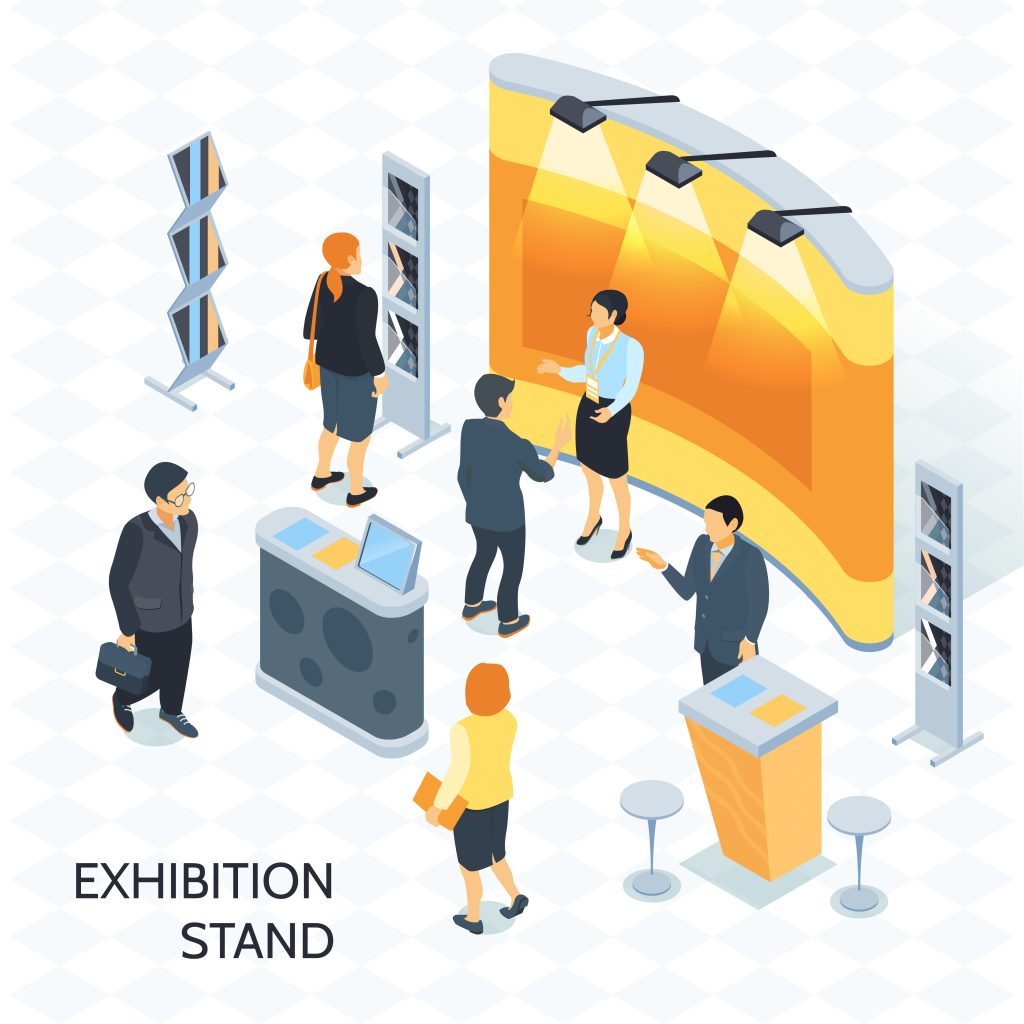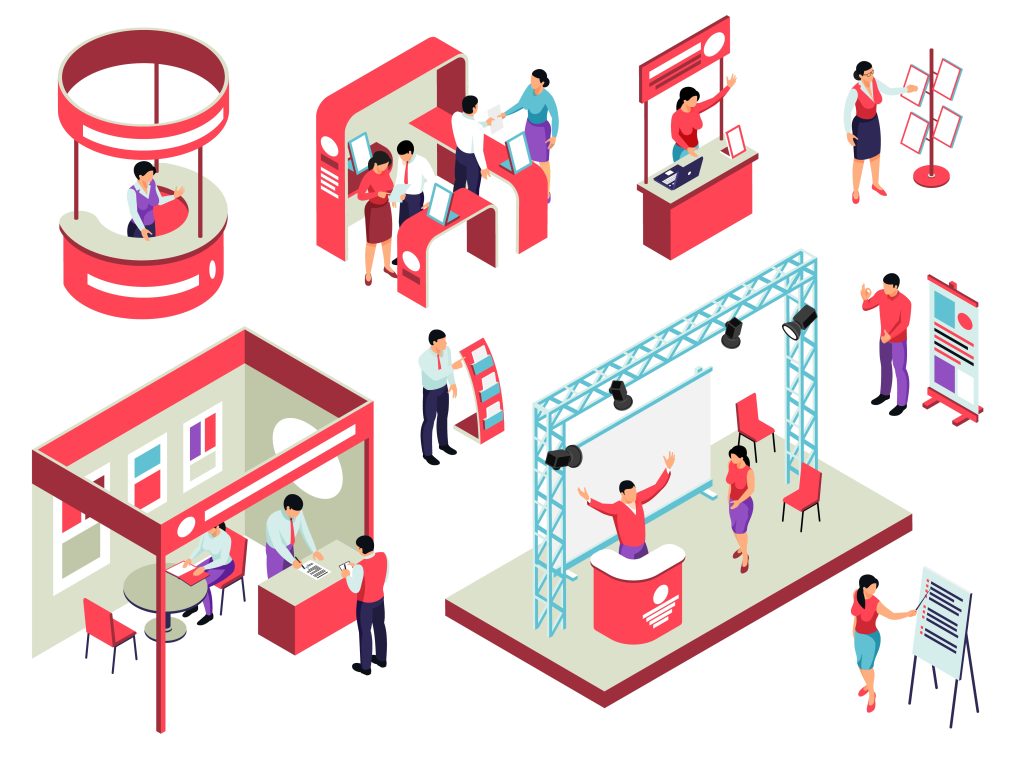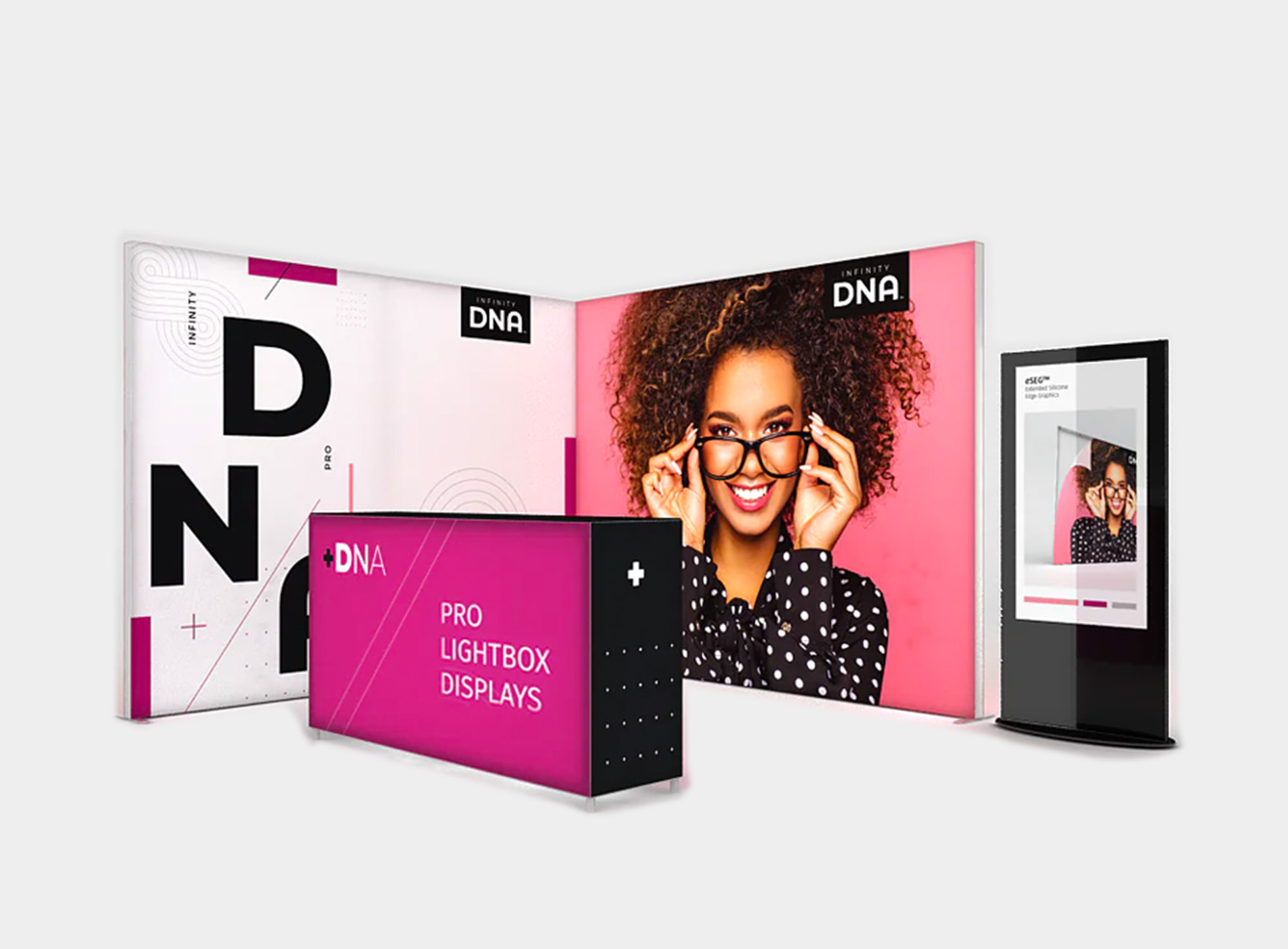Exhibitions and Trade shows stand and are invaluable opportunities for businesses to showcase their products, connect with potential clients, and stay ahead in the competitive market. One crucial aspect that often perplexes businesses is the decision-making process when it comes to choosing an exhibition stall. The conundrum between price and performance becomes a central focus—how much should you invest, and what returns can you expect? In this comprehensive guide, we will delve into the intricacies of the exhibition stall cost conundrum, helping you make informed decisions that balance your budget with the desired performance.
The Significance of Exhibition Stalls
Exhibition stalls serve as the physical representation of your brand during trade shows and events. These stalls go beyond mere spatial setups; they are strategic marketing tools that can influence brand perception, drive engagement, and generate leads. The challenge lies in striking the right balance between the cost of the exhibition stall and the performance it delivers.
Understanding the Exhibition Stall Cost Landscape
Before diving into the decision-making process, let’s explore the landscape of exhibition stall costs. The costs associated with exhibition stalls can vary significantly based on several factors:
- Size of the Stall:
The size of your exhibition stall is a major determinant of cost. Larger stalls typically come with higher expenses, including construction, branding, and logistical considerations.
Read Also: 2024 Exhibition Stand Trends: What’s Hot and What’s Not
- Customization and Design Complexity:
The level of customization and design complexity plays a crucial role in cost. A highly customized and intricate design will naturally incur higher expenses compared to a more straightforward and standard setup.
- Materials Used:
The choice of materials for construction, branding elements, and booth accessories contributes to overall costs. High-quality materials and finishes often come with a higher price tag.
- Additional Features and Technology:
Incorporating additional features such as interactive displays, technology integrations, or specialized lighting can impact costs. Technologically advanced setups tend to be more expensive.
- Logistics and Transportation:
Logistics, transportation, and on-site setup are additional cost considerations. If your exhibition stall requires specialized transportation or complex installation, these factors contribute to the overall budget.
- Rental vs. Ownership:
The decision to rent or own the exhibition stall also affects costs. Renting might offer a more budget-friendly option for short-term use, while owning provides long-term investment benefits.

Read Also: Making Exhibition Stands Eco-friendly
Decoding the Price-Performance Dilemma
Now that we have a foundation in understanding exhibition stall costs, let’s delve into the key considerations that can help you decode the price-performance dilemma.
1. Define Your Objectives:
Before assessing costs, clearly define your objectives for participating in the trade show. Are you focused on brand visibility, lead generation, product launches, or networking? Understanding your primary goals will guide decisions on the type of stall and features needed for optimal performance.
2. Budget Allocation:
Establish a realistic budget for your exhibition stall. Consider not only the upfront costs but also potential hidden expenses. Allocating a budget ensures that you make decisions aligned with your financial constraints while maximizing the impact of your presence.
3. Assess Your Audience:
Know your target audience and their expectations. A well-designed exhibition stall that resonates with your audience can significantly enhance performance. Consider factors such as industry trends, preferences, and the level of engagement your audience is likely to respond to.
4. Size Matters:
Evaluate the size of the exhibition stall needed based on your objectives and budget. While larger stalls offer more visibility, they come with higher costs. Striking the right balance ensures that you optimize space without overspending.
5. Customization for Brand Identity:
Customization plays a pivotal role in creating a unique brand identity. A well-designed, customized stall reflects professionalism and reinforces brand messaging. While customization can be more expensive, it offers a distinct advantage in capturing attention and leaving a lasting impression.
6. Technology Integration:
Assess the role of technology in enhancing performance. While advanced technology features can elevate your exhibition stall, they also come with additional costs. Consider the relevance of technology to your objectives and audience engagement.
7. Long-Term vs. Short-Term Investment:
Determine whether your participation in trade shows is a long-term strategy or a short-term initiative. For businesses with consistent trade show presence, investing in an owned, customized stall may provide better long-term value. For occasional participation, rental options might be more cost-effective.
8. Hidden Costs and Logistics:
Anticipate hidden costs related to logistics, transportation, and on-site setup. Factor in these costs when assessing the overall budget. Efficient logistics planning can help avoid unexpected expenses.
9. Return on Investment (ROI) Analysis:
Conduct a thorough ROI analysis to assess the potential returns from your exhibition stall investment. Consider both tangible returns, such as lead generation and sales, and intangible returns, such as brand visibility and industry positioning.
10. Market Research and Benchmarking:
Conduct market research and benchmarking to understand industry standards and competitor practices. This information can provide insights into the types of exhibition stands that perform well in your industry and help you make informed decisions.
Finding the Middle Ground: Budget-Friendly Performance
Striking the right balance between price and performance involves finding the middle ground that aligns with your objectives and budget constraints. Consider the following strategies to achieve a budget-friendly yet high-performing exhibition stall:
1. Prioritize Key Design Elements:
Identify key design elements that align with your brand and objectives. Prioritize these elements to ensure that even with a limited budget, you can focus on what matters most for optimal performance.
Read Also: 5 Display Stand Hacks to Make Your Exhibition Stand Pop
2. Opt for Modular and Reusable Designs:
Explore modular and reusable designs that offer flexibility and cost savings. Modular setups can be adapted to different booth sizes and layouts, providing a versatile solution for various events.
3. Strategic Branding with Standard Elements:
Emphasize strategic branding using standard elements. While customization is beneficial, strategically placed and well-designed standard elements can achieve brand visibility without excessive costs.
4. Technology Within Budget:
Integrate technology within your budget constraints. Explore cost-effective technology solutions that enhance engagement without breaking the bank. For example, tablets for interactive product displays can be more budget-friendly than large interactive screens.
5. Explore Rental Options:
Assess the feasibility of renting certain components or the entire exhibition stall. Renting can be a cost-effective option, especially for businesses with sporadic trade show participation.
6. Negotiate with Suppliers:
Engage in negotiations with suppliers and contractors. Often, suppliers are willing to provide discounts or bundle services, contributing to overall cost savings.
7. Utilize Sponsorship Opportunities:
Explore sponsorship opportunities offered by event organizers. Sponsorship can provide additional visibility and benefits, offsetting some of the costs associated with your exhibition stall.
8. Plan Well in Advance:
Plan your exhibition stall well in advance. Early planning allows for better negotiation, cost comparisons, and the opportunity to take advantage of early-bird discounts from suppliers.
9. Optimize Logistics for Cost Efficiency:
Streamline logistics for cost efficiency. Efficient transportation, storage, and on-site setup practices can contribute to minimizing hidden costs associated with logistics.
10. Continuous Improvement:
Adopt a mindset of continuous improvement. Assess the performance of your exhibition stall after each event, gather feedback, and identify areas for enhancement. This iterative approach ensures that you refine your strategy over time.
Read Also: How To Create The Best Exhibition Stand
Case Studies: Success Stories of Budget-Friendly Exhibition Stalls
Let’s explore real-world success stories of businesses that navigated the exhibition stall cost conundrum effectively:
1. Startup Triumph: XYZ Innovations
XYZ Innovations, a startup with budget constraints, strategically designed a modular exhibition stall for a major industry event. By prioritizing key design elements and utilizing reusable components, they achieved a strong brand presence without compromising performance. The modular design allowed them to adapt to various booth sizes at different events, maximizing their budget-friendly solution.
2. Strategic Branding Excellence: ABC Solutions
ABC Solutions, a mid-sized company, opted for a combination of standard and custom elements for their exhibition stall. By strategically placing branded elements and utilizing cost-effective technology, they achieved high visibility without exceeding their budget. The emphasis on strategic branding elements contributed to a memorable and impactful presence at multiple trade shows.
3. Efficient Use of Rental Options: Acme Enterprises
Acme Enterprises, a well-established brand, leveraged rental options for specific components of their exhibition stall. By renting certain technology components and display elements, they achieved cost savings without compromising on the overall design and impact of their stall. This approach allowed them to reallocate budget resources for other strategic elements.
Read Also: Fabric vs. Pop-Up vs. Traditional: A Comparison of Exhibition Stand Options

Conclusion: Achieving Optimal Balance
The exhibition stall cost conundrum is a challenge faced by businesses of all sizes and industries. Striking the right balance between price and performance involves a strategic and informed approach. By defining clear objectives, allocating budgets effectively, and adopting cost-conscious strategies, businesses can create exhibition stands that not only fit their financial constraints but also deliver optimal performance.
Remember that the goal is not necessarily to have the most extravagant stall but rather one that aligns with your brand, resonates with your audience and achieves the desired outcomes. Whether you’re a startup navigating budget constraints or an established brand looking for cost-effective solutions, the key lies in making informed decisions that enhance the impact of your exhibition stall without compromising your financial health. As you embark on your trade show journey, decode the cost conundrum with confidence, knowing that a well-balanced approach will contribute to the success of your brand on the exhibition floor.
Read Also: Unveiling 2024’s Top Trends: Roller Banners, Pop-Up Stands & Exhibition Displays
Are you looking to create a standout exhibition stand for your next trade show in the UK? Contact us today for expert guidance on balancing price and performance to maximize your brand’s impact on the exhibition floor with UK Exhibition Stands, Trade Show Solutions and Best Exhibition Stall Design.
FAQ’s
Exhibition stands are physical setups used by businesses to represent their brand during trade shows and events. They are crucial for driving engagement, generating leads, and influencing brand perception among potential clients.
Several factors contribute to the cost of an exhibition stand, including its size, customization level, materials used, additional features like technology integration, logistics, and whether you choose to rent or own the stand.
The price-performance dilemma refers to the challenge of balancing the investment in an exhibition stand with the expected returns in terms of brand visibility, lead generation, and overall performance at trade shows.
To decode the price-performance dilemma, it’s essential to define your objectives, allocate a realistic budget, understand your target audience, evaluate the size and customization needs of the stand, consider technology integration, assess long-term vs. short-term investment options, anticipate hidden costs, conduct ROI analysis, and conduct market research for benchmarking.
Some budget-friendly strategies include prioritizing key design elements, opting for modular and reusable designs, strategic branding with standard elements, integrating technology within budget constraints, exploring rental options, negotiating with suppliers, utilizing sponsorship opportunities, planning well in advance, optimizing logistics for cost efficiency, and adopting a mindset of continuous improvement.
While planning your exhibition stall, consider factors such as your objectives, budget constraints, target audience, size and customization needs, technology integration, logistics, ROI analysis, and continuous improvement strategies to refine your approach over time.

